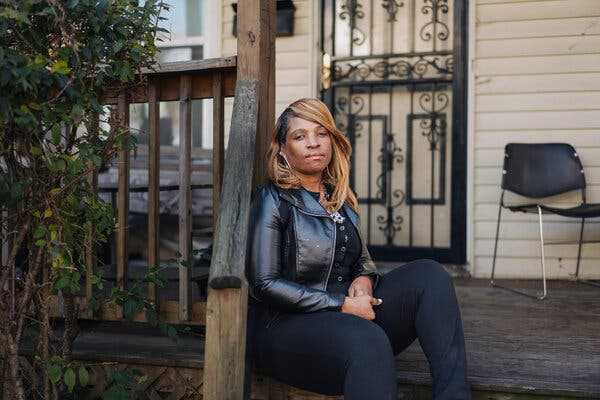The Biden administration has deployed various programs to try to increase access to clean energy. But systems that could help lower bills are still out of reach for many low-income households.
- Share full article

Cindy Camp is trying to cut down on her expenses because her gas and electric bills keep “going up and up.”
Cindy Camp is one of many Americans facing rising utility costs. Ms. Camp, who lives in Baltimore with three family members, said her gas and electric bills kept “going up and up” — reaching as high as $900 a month. Her family has tried to use less hot water by doing fewer loads of laundry, and she now eats more fast food to save on grocery bills.
Ms. Camp would like to save money on energy bills by transitioning to more energy-efficient appliances like a heat pump and solar panels. But she simply cannot afford it.
“It’s a struggle for me to even maintain food,” Ms. Camp said.
Power bills have been rising nationwide, and in Baltimore, electricity rates have increased almost 30 percent over the last decade, according to data from the Bureau of Labor Statistics. While clean energy systems and more efficient appliances could help low-income households mitigate some of those increases, many face barriers trying to gain access to those products.
Low-income households have been slower to adopt clean energy because they often lack sufficient savings or have low credit scores, which can impede their ability to finance projects. Some have also found it difficult to navigate federal and state programs that would make installations more affordable, and many are renters who cannot make upgrades themselves.
Energy costs have traditionally been a bigger burden for low-income households, which typically spend a far larger percentage of their gross income on utility bills than higher-earning households, according to the Energy Department. Many also live in older, less efficient homes, which can lead to more expensive utility bills. In 2020, 34 million U.S. households, or 27 percent of all households, reported difficulty paying their energy bills or kept their homes at an unsafe temperature because of energy cost concerns, according to the Energy Information Administration.
The Biden administration has deployed a suite of programs to try to increase access to clean energy and lower household utility bills. The efforts are part of a broader push to reduce carbon emissions in response to climate change, which often disproportionately affects disadvantaged communities.
We are having trouble retrieving the article content.
Please enable JavaScript in your browser settings.
Thank you for your patience while we verify access. If you are in Reader mode please exit and log into your Times account, or subscribe for all of The Times.
Thank you for your patience while we verify access.
Already a subscriber? Log in.
Want all of The Times? Subscribe.
SKIP ADVERTISEMENT
Source: nytimes.com



